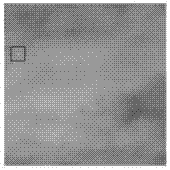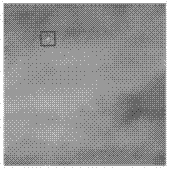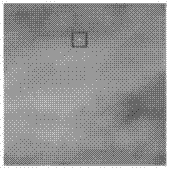Detection method and device for small and dim targets in infrared sequence images
A technology of sequence images and weak and small targets, applied in image enhancement, image analysis, image data processing, etc., can solve the problems of unsatisfactory background clutter suppression effect, high computational complexity, and long detection time.
- Summary
- Abstract
- Description
- Claims
- Application Information
AI Technical Summary
Problems solved by technology
Method used
Image
Examples
Embodiment Construction
[0038] The present invention will be described in detail below in conjunction with the accompanying drawings and specific embodiments.
[0039] The invention provides a method for detecting weak and small targets in infrared sequence images, which collects low-dimensional and small data amount image signals according to the generated random projection space According to the Mahalanobis distance, the collected low-dimensional image signal with small amount of data The single-frame sub-images and the original infrared sequence images are respectively processed for background suppression and weak target information retention, and the segmentation threshold τ is selected according to the infrared sequence images obtained after processing, and the infrared sequence images are detected according to the segmentation threshold τ weak target.
[0040] An embodiment of the present invention provides a method for detecting weak and small targets in infrared sequence images, such as f...
PUM
 Login to View More
Login to View More Abstract
Description
Claims
Application Information
 Login to View More
Login to View More - R&D
- Intellectual Property
- Life Sciences
- Materials
- Tech Scout
- Unparalleled Data Quality
- Higher Quality Content
- 60% Fewer Hallucinations
Browse by: Latest US Patents, China's latest patents, Technical Efficacy Thesaurus, Application Domain, Technology Topic, Popular Technical Reports.
© 2025 PatSnap. All rights reserved.Legal|Privacy policy|Modern Slavery Act Transparency Statement|Sitemap|About US| Contact US: help@patsnap.com



